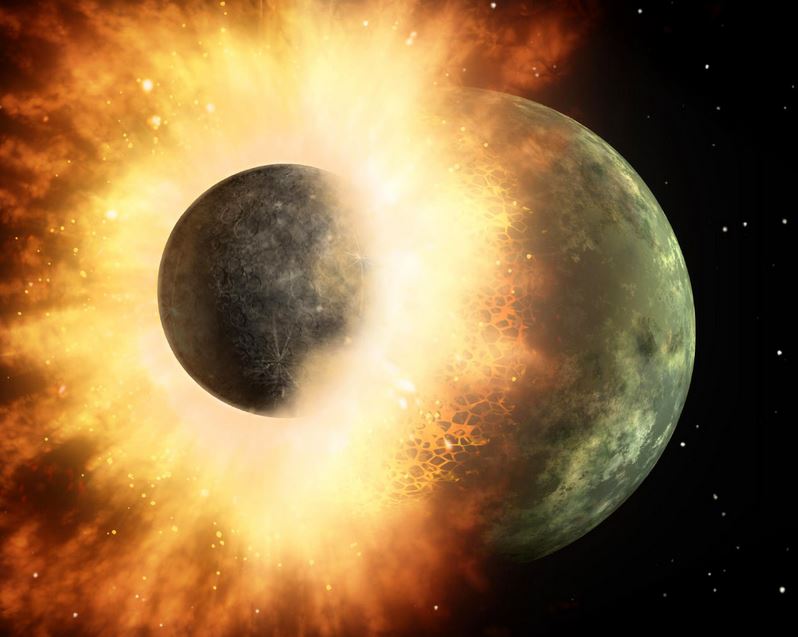There is life on Earth because a Mercury-like planet crashed into our world billions of years ago, which created the conditions required for life to flourish, such as the planet’s magnetic field, say researchers from the Department of Earth Sciences at the University of Oxford.
The scientists wrote about their study in the academic journal Nature (citation below).
Scientists say that after analyzing the elements that make up the Earth’s mantle and core, a collision must have occurred a long time ago, which made our planet’s core hot.
Heat in the Earth’s core drives the movement of molten iron in the centre of the planet, which generates the magnetic shield protecting us all from harmful cosmic radiation. If that radiation were not deflected, it is doubtful that any kind of life (as we know it) would have formed.

Without a collision with a Mercury-like planet, Earth today would not have the magnetic shield that protects us from damaging cosmic radiation.
Dr. Anke Wohlers and Prof. Bernard Wood point out that the Earth’s crust and mantle contain higher concentrations of neodymium and samarium – two rare-earth metals – than what has been observed in meteorites.
These different rare-earth metal ratios suggest that something else happened when the Earth was young, apart from the continual impacts by meteorites.
It is possible that a Mercury-type planet, with high concentrations of sulphur, was involved in a massive collision with our planet and became incorporated into Earth.
The sulphur would have sparked a chemical evolution that would have led to the current balance of neodymium and samarium, they said.
Life and water on the surface would probably not have existed
More importantly, as far as we are concerned, the collision plus the addition of sulphur to a young Earth would have generated the heat source that drives the ‘geo-dynamo’ responsible for our planet’s magnetic field, which deflects cosmic radiation and allows liquid water and life to exist at the surface.
Dr. Anke Wohlers and Prof. Bernard Wood say that given that the current ratio of samarium to neodymium in the Earth’s mantle and crust could not have come just from meteorite bombardments, it could have been the result of a massive collision between our planet and a smaller, Mercury-like body.
With the Mercury-like planet integrating into Earth, a sulphur-rich core would have emerged, with the production of radioactive uranium and thorium, which generated the heat required to drive the movements of molten iron that created our planet’s magnetic field.

Earth’s magnetic field protects the planet’s surface from harmful cosmic radiation. (Image: NASA)
The authors concluded in an Abstract in the journal:
“We show here that addition of a reduced Mercury-like body (or, alternatively, an enstatite-chondrite-like body) rich in sulfur to the early Earth would generate a superchondritic Sm/Nd in the mantle and an 142Nd/144Nd anomaly of approximately +14 parts per million relative to chondrite. In addition, the sulfur-rich core would partition uranium strongly and thorium slightly, supplying a substantial part of the ‘missing’ heat source for the geodynamo.”
In an accompanying Nature Letter, Richard Carlson of the Carnegie Institution for Science in Washington D.C., writes that the computer model the scientists devised appears to solve the problem of the missing heat source and dynamo, but begs a new question regarding how the Earth ended up in its present state.
Dr. Carlson wrote:
“The energy source that drives the generation of the Earth’s magnetic field in the core has long been a topic of discussion.”
Citations:
“A Mercury-like component of early Earth yields uranium in the core and high mantle 142Nd,” Anke Wohlers & Bernard J. Wood. Nature. Published 15 April, 2015. DOI: 10.1038/nature14350.
“Planetary science: A new recipe for Earth formation,” Richard W. Carlson. Nature. Published 16 April, 2015. DOI: 10.1038/520299a.

